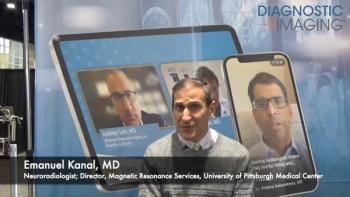
SMV receives first FDA clearance for PET/CT hybrid system
SMV’s Positrace, the first commercially available PET/CT system, obtained FDA 510(k) clearance Sept. 1, just days before the European Association of Nuclear Medicine meeting began in Paris.Although GE Medical Systems has a 510(k) clearance for its
SMVs Positrace, the first commercially available PET/CT system, obtained FDA 510(k) clearance Sept. 1, just days before the European Association of Nuclear Medicine meeting began in Paris.
Although GE Medical Systems has a 510(k) clearance for its GE Millennium VG Hawkeye fusion system, which combines anatomical and functional imaging, that clearance is only for SPECT/CT (although clinical trials for PET/CT are under way). Siemens Medical Systems has a work-in-progress PET/CT unit installed at the University of Pittsburgh.
SMV does not consider such hybrid systems the chief competitors to Positrace, but plans to market the newly FDA-cleared product against dedicated PET scanners.
Positrace is first and foremost a whole-body FDG (fluorodeoxyglucose) imager for oncology applications, said Lonnie Mixon, SMV vice president of world marketing. The fact that it includes CT is icing on the cake over other instruments of its kind.
Positrace will have a street price of just over $1 million, according to Mixon, about the same as the ADAC CPET and Siemens ART, which are dedicated PET systems designed for clinical applications.
The Positrace has a 70-cm opening, a 5-cm axial field of view, and uses six sodium iodide crystal detectors arranged in a hexagonal configuration. The table is rated to 500 pounds. Positrace was designed for whole-body surveys of FDG distribution, with localization and attenuation correction provided by the diagnostic CT scanner.
Fusion imaging is bound to have a high profile in the next few years. It combines nuclear medicines ability to image disease processes with CTs ability to show underlying anatomy. GE calls its system functional anatomic mapping (FAM), while others refer to the combined modality as hybrid imaging.
The first U.S. installation of Positrace will be at MetroHealth Hospital in Cleveland, while another is being installed in Nantes, France. The receipt of FDA clearance just prior to the EANM meeting afforded SMV the opportunity to kick off its product launch at a major trade show. Partly on the basis of interest at this show, Mixon predicted SMV would receive a considerable number of orders in the next 30 days. He would not say how many that might be.
The next major opportunity for promoting Positrace will occur in late November at the RSNA meeting, according to Mixon, although SMV will first take advantage of an end-of-September clinical PET symposium in Washington, DC.
Newsletter
Stay at the forefront of radiology with the Diagnostic Imaging newsletter, delivering the latest news, clinical insights, and imaging advancements for today’s radiologists.




























